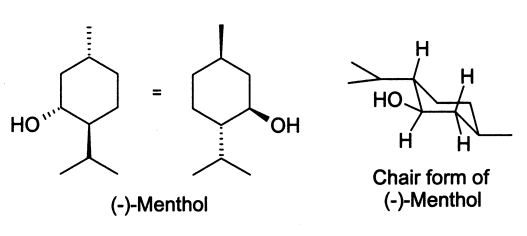Samantha de Lima : Burt's Bees Beeswax lipbalm

The reason why I chose this product is because I use it a lot and I'm very interested on finding more about this product and it's history. Originating in Maine in the 1980s, the business began when co-founder Roxanne Quimby started making candles from Burt Shavitz's leftover beeswax.[11] This eventually led to their bottling and selling of honey, a practice that slowly diminished as the company evolved as a corporation. Eventually, other products using honey and beeswax, including edible spreads and furniture polish, were sold, before moving into the personal care line products like lip balm. The market that produces it is Burt's Bees company.
The ingredients of the product is : Canola oil, Cocos Nucifera (coconuts), and Mentha Piperita (peppermint).. I am going to explain each of these three ingredients to you, the chemical name, health effects, chemical formula, etc.
Where is Canola Oil derived from?
Canola oil is a vegetable oil that's derived from rapeseed plant, a species of the Brassica genus that includes turnip, mustard, and colewort, a species that includes cabbage, cauliflower, broccoli, and kale.
Health effects of canola oil: Canola oil is not a healthy fat. It has been processed, heated to a point which has destroyed most of its beneficial properties, and then deodorized in order to make it taste and smell fresh and clean..If you eat vegetable oils that are already oxidized from heat and light in processing, you are exposing your own healthy tissues to a volatile substance which will damage them…. Oxidation, or rancidity, is not only a major contributor to most degenerative diseases, it also causes inflammation. Excess inflammation in the body can cause anything from arthritis to more serious diseases such as Parkinson’s, bipolar moods, schizophrenia, and obsessive compulsive disorders.
Physical and Chemical properties of canola oil (3)
Physical:Viscosity, Relative Density, and Crismer value
Chemical:Triglycerides, Phospholipids, and Crude oil
 |
| Canola oil chemical formula |
The purpose of adding canola oil to Burt's Bees Beeswax Lip balm is to to make the beeswax soft and not hard nor have cracks.
Now, unto the next ingredient, Mentha Piperita (peppermint)
The Latin name for peppermint is Mentha Piperita. It is actually a cross breed between Water Mint and Spearmint..Peppermint is a perennial plant found in Europe, Asia and North
America.Peppermint extract is an herbal extract of peppermint (Mentha x piperita) made from the essential oils of peppermint leaves
 |
| Chemical Structure of Mentha Piperita |
Health effects of Mentha Piperita:
The use of herbs is a time honored approach to strengthening the body and treating disease. Herbs, however, can trigger side effects and interact with other herbs, supplements, or medications. For these reasons, you should take herbs with care, under the supervision of a health care provider.Do not take peppermint or drink peppermint tea if you have gastroesophageal reflux disease (GERD -- a condition where stomach acids back up into the esophagus) or hiatal hernia. Peppermint can relax the sphincter between the stomach and esophagus, allowing stomach acids to flow back into the esophagus. (The sphincter is the muscle that separates the esophagus from the stomach.) By relaxing the sphincter, peppermint may actually make the symptoms of heartburn and indigestion worse.
Peppermint may make gallstones worse.
Large doses of peppermint oil can also be toxic. Pure menthol is poisonous and should never be taken internally. It is important not to confuse oil and tincture preparations.
Physical and Chemical properties of Mentha Piperita:
| 【Appearance】 Colorless to pale yellow-greenish liquid. Strong peppermint odor. | |
| 【Solubility in water】 Slightly soluble | |
| 【Density】 0.896-0.908 g/cm3 (25 deg | |
| 【Usage】 To flavor mouthwashes, chewing gum, liqueurs, and toothpastes. As a source of menthol. | |
| 【Refractive Index】 1.421 |
The purpose of adding this ingredient to the product:
Cold pressed from the fruit of palm trees, which are native to the tropics and grown in sandy soil, this oil is light, non-greasy, exceptionally emollient and has cooling properties. It is a great oil for use as a general moisturizer and serves as a protective layer on the skin, helping to retain the moisture. Because it is mild, it is suitable for inflamed, irritated and sensitive skin. Coconut oil is commonly used to promote lather in soaps and gels, and be incorporated well into balms and stick formulations. It is often found in lipsticks, soaps, ointments, massage creams and sun.
 |
| Cocos Nucifera (Coconuts) |
Physical properties:Color: Coconut oil is colorless at or above 30o C. It is white when in its solid form.
Odor: The typical smell of Coconut oil is that of coconuts (if not refined, bleached, and deodorized).
Melting Point: Coconut oil melts at 25o C (76o Fahrenheit). It is solid below this temperature.
Smoking Point: 1770 C (3500 Fahrenheit).
Solubility in Water: Coconut oil forms a white homogenous mixture when beaten well in a little water. Otherwise, it is insoluble in water at room temperature.Chemical properties:Chemical Composition: Among the chief constituents, coconut oil also has;
I. Vitamin-E: The thing which you always wanted for silky hair and smooth, younger looking skin.
II. Moisture: The amount of moisture present in Coconut oil varies greatly depending upon the moisture content of the source, such as Copra or Fresh Coconut; including the method of extraction and also on the processing done on it. But obviously, coconut derived from well-dried copra will have less moisture than that from less dried copra or from fresh coconuts (virgin coconut oil). Similarly, the oil subjected to heat will have less moisture than that which was not exposed to heat.Reactivity: Coconut oil shows oxidation and reactivity with acids and bases.
Chemical Formula for Cocos Nucifera:
 |
| Cocos Nucifera Chemical Formula |
 |
| Lewis structure of Mentha Piperita |
